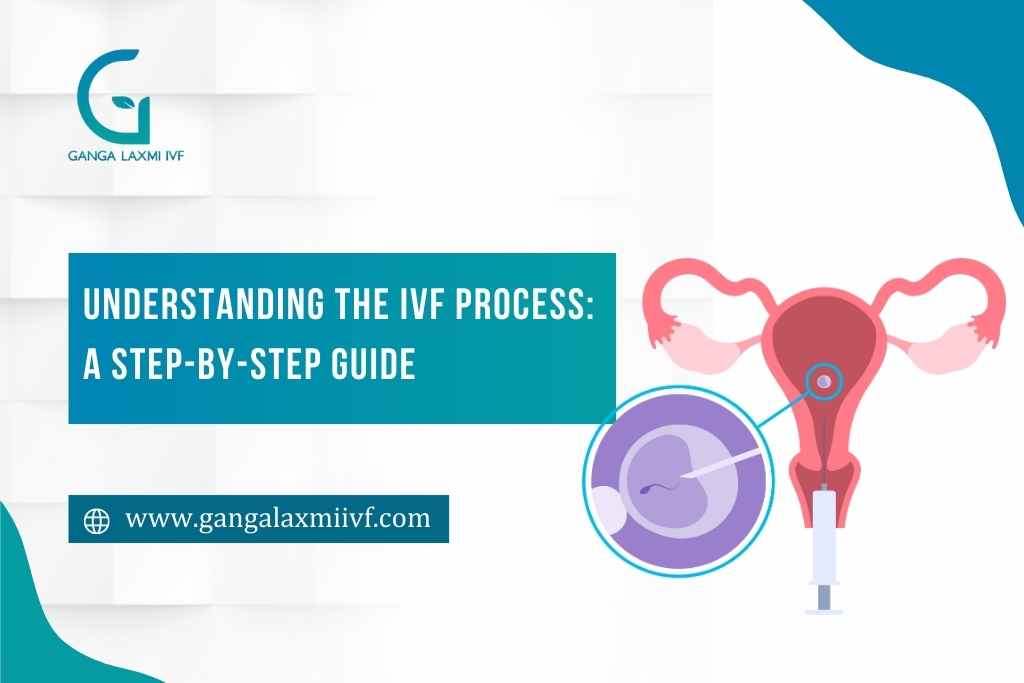In Vitro Fertilization (IVF) is a group of processes that helps infertile women get pregnant and experience motherhood. Infertility is a condition where a woman is not able to bear a child naturally after indulging in sexual intercourse many times. With IVF, the chances of getting pregnant increase along with preventing any complexities and genetic problems that the child can have.
During this procedure, eggs are retrieved from the ovaries of the woman and then fertilized with the sperm on a lab dish. After this, the fertilized egg is placed back into the woman’s uterus to foster pregnancy. The whole process of IVF usually takes 2-3 weeks or sometimes longer depending upon the procedure followed and individual health factors.
In this article, you will learn about the steps that are carried out during the IVF process.
Step-by-step Guide Under IVF process
In Vitro Fertilization is a type of Assisted Reproductive Technology (ART) used to help people conceive a baby when they are facing difficulty in getting pregnant naturally. Below are the steps on how IVF works:
-
Initial Consultation and Assessment:
The very first step in the IVF process is to get a consultation with your healthcare provider. Discuss your problem openly, clear your doubts and share your concerns. Get proper advice from the doctors and work accordingly. If you are a good fit for IVF then you need to follow an assessment where certain tests will be taken, a physical examination will be done and your medical history will be reviewed.
The test may include common tests such as blood tests, ultrasound, semen analysis of male partners, etc
-
Ovulation Stimulation:
Here, the woman is given certain medications by the healthcare provider to stimulate her ovaries to produce multiple eggs instead of just one; Production of multiple eggs is important so that the best quality eggs can be retrieved for fertilization. Proper monitoring and ultrasounds are done to track the development of ovarian follicles so that the dosage of medication can be adjusted.
-
Egg Retrieval:
Once the eggs are ready, they are collected from the woman’s ovaries using a small needle under ultrasound guidance. This procedure is usually done under sedation. This procedure is performed after 10-14 days of stimulation when the follicles have matured. To retrieve the egg, a thin needle is inserted through the vaginal wall into the ovaries to retrieve the mature egg. This procedure hardly takes 30-40 minutes and does not require any stay in the hospital. The retrieved egg is immediately placed in the culture medium for further evaluation.
-
Sperm collection and preparation:
The next step involves collecting sperm and preparing it for fertilization. On the same day of egg retrieval, sperm are collected from the male partner or the sperm donor, which is then sent for sperm washing. This process includes separating the most motile and viable sperm from the seminal fluid. This process increases the chances of pregnancy and successful IVF procedure.
-
Fertilization:
The collected eggs are then combined with sperm from the partner or a donor in a laboratory dish, or through intracytoplasmic sperm injection (ICSI), where a single sperm is injected directly into the egg. This procedure is followed in the conditions of poor male infertility or sperm quality. After fertilization, the embryos are placed in an incubator and monitored for development over the next few days.
-
Embryo development:
If the fertilization is successful, the embryo starts to develop over the next few days. It usually takes 3-5 dates to culture. During this time the embryo undergoes several stages of development, where it starts from a single cell and then divides itself to form a blastocyst. The whole development process is keenly observed by embryologists to make sure that there are no chances of complexities.
-
Embryo Transfer:
After a few days of development, one or more embryos are transferred into the woman’s uterus through the cervix using a thin tube. Any extra embryos can be frozen for future use. The number of embryos implanted in the uterus can be adjusted as it depends upon the patient’s age, embryo quality, and medical history.
-
Embryo Transfer:
After a few days of development, one or more embryos are transferred into the woman’s uterus through the cervix using a thin tube. Any extra embryos can be frozen for future use. The number of embryos implanted in the uterus can be adjusted as it depends upon the patient’s age, embryo quality, and medical history.
-
Pregnancy test:
As two weeks pass after the embryo transfer, a pregnancy test is done to make sure if the IVF procedure was successful or not. This procedure is carried out approximately after 10-14 days of embryo transfer. A blood test is performed to measure the level of human chorionic gonadotropin (hCG), a hormone that is produced during pregnancy. If the results are positive then it indicates that successful implantation has taken place.
Conclusion
In conclusion, the IVF procedure is a hope for many couples who wish to experience parenthood. With the expertise of knowledgeable doctors and favorable factors, one can achieve pregnancy. Eliminating exceptional cases, babies born from IVF procedures are healthy and fit similar to the ones born with natural pregnancy.


